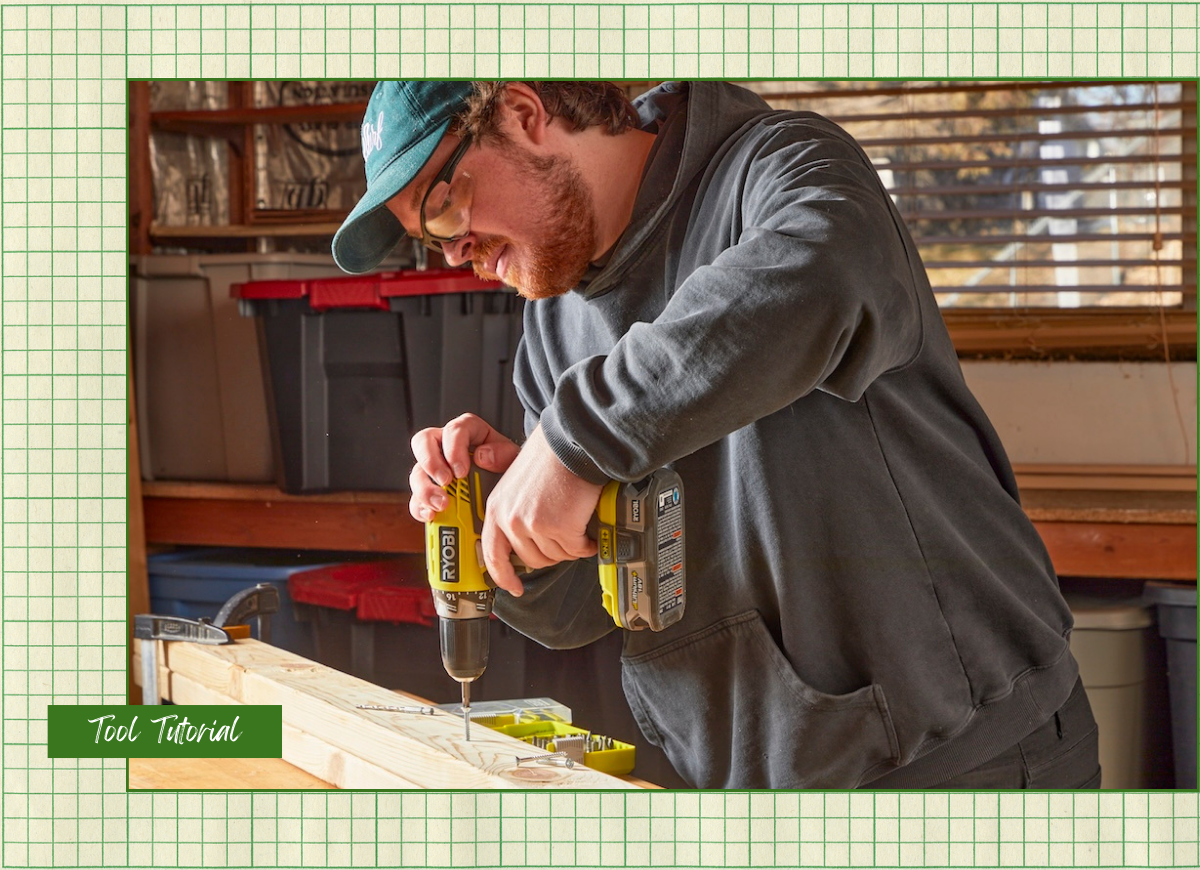

We may earn revenue from the products available on this page and participate in affiliate programs. Learn More ›
One of the most important DIY tools is the trusty power drill. Equipped with speed and torque, a power drill can bore holes, tighten fasteners, and even mix paint. There just isn’t a replacement for the convenience and accuracy that a drill can offer.
However, with so much power on tap, it’s no wonder that a drill might cause some hesitation among new DIYers. However, after learning how to use a drill and how much time the tool can save, a user may never turn back.
This guide explains the differences between types of drills, how to use a power drill, and a few safety tips.
Important Drill Parts
The first step to learning how to use a power drill is becoming familiar with the tool’s different parts. Like most power tools, drills consist of several key components:
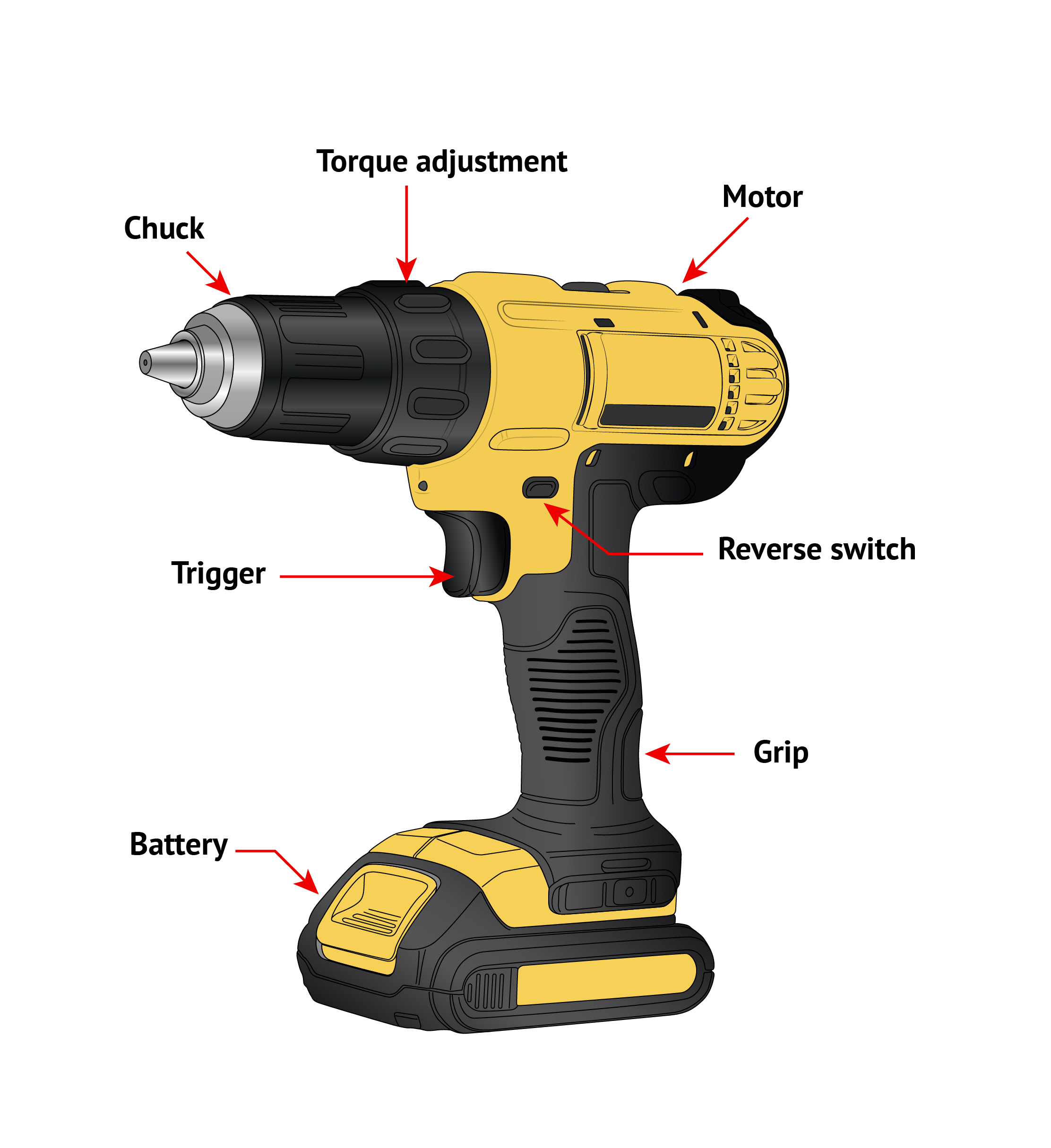
- Chuck: The part of the drill that clamps down on the drill bit or driver bit. Most modern drills feature keyless chucks, but older drills often require the use of a special wrench to open and close the chuck.
- Trigger: The trigger is the on-off switch used to activate the drill’s motor. Most drills feature pressure-sensitive triggers, which means that light pressure will activate a slow speed, while heavy pressure will produce an increased speed.
- Motor: Found at the top of most drills, the motor is the part that actually spins the chuck and bits.
- Grip: The place where the user holds the drill is often covered with rubber for an anti-slip surface and comfort.
- Torque adjustment: The torque adjustment is the ring at the base of the chuck that allows the user to select the amount of torque the drill will exert. There is a clutch inside the drill that will slip at the predetermined value to prevent over-torquing.
- Reverse switch: Drills spin clockwise and counterclockwise, and the user selects the direction by using the reverse switch.
- Cord or battery: The cord or battery is the drill’s source of power. Cords plug into wall outlets or extension cords, while batteries charge on a charging station and then snap onto the drill to power it.
RELATED: The 15 Most Useful Power Drill Attachments
3 Types of Drill/Drivers to Know
Power drills are not new tools. In fact, the first power drill patent is more than 130 years old. Over time, drill designs have evolved quite a bit, and today’s models come in three main varieties.
1. Corded Drill
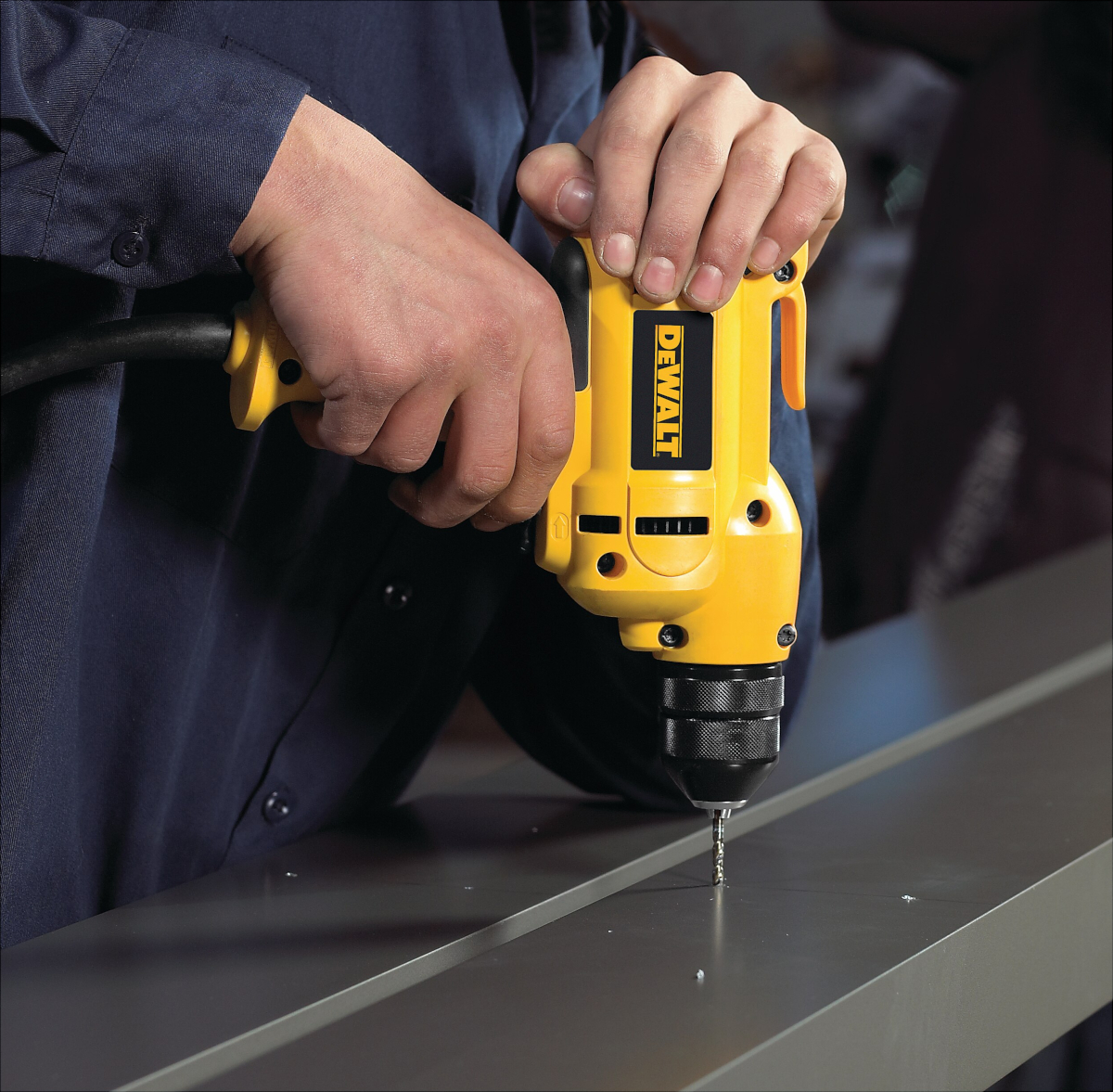
The corded drill is the original power drill. These drills feature electrical cords that plug into outlets or extension cords and power the motor. Often, corded drills are heavy-duty and produce a significant amount of torque, but lack some of the refinement and new technology of battery-powered tools. The cord does tether the user, but not having to worry about a battery can be a fair trade-off.
Our Recommendation: DEWALT 3/8″ VSR Mid-Handle Drill on Amazon for $89.16
The DEWALT DWD115K corded drill features a keyless chuck and a stout 8-amp motor, which produces speeds up to 2,500 rpm.
2. Cordless Drill
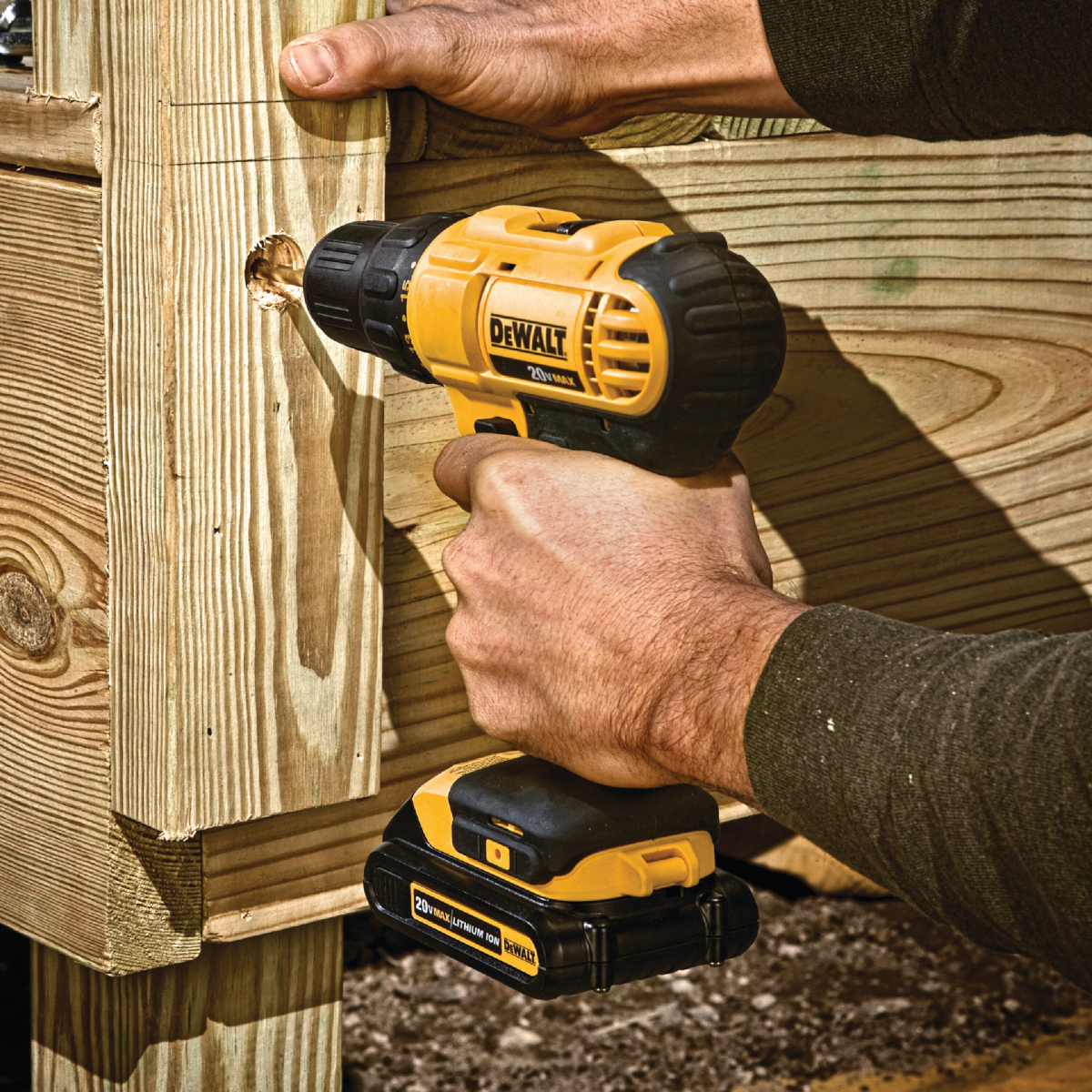
Similar in design to a corded drill, cordless drills use detachable, rechargeable batteries that allow you the freedom to take a drill anywhere. Often, these drills offer less torque, but they’re full of features like keyless chucks, onboard LED work lights, belt clips, and more. The first cordless drills were slow, underpowered, and featured poor battery life, but today’s models are the opposite: fast, strong, and long-lasting.
Our Recommendation: DEWALT 20V MAX Compact Drill/Driver Kit on Amazon for $116.49
The DEWALT DCD771C2 compact drill/driver uses the same battery system as the brand’s other popular tools, and it produces enough power and runtime for most DIY tasks.
RELATED: What’s the Difference? Hammer Drill vs. Impact Driver vs. Cordless Drill/Driver
3. Right-Angle Drill
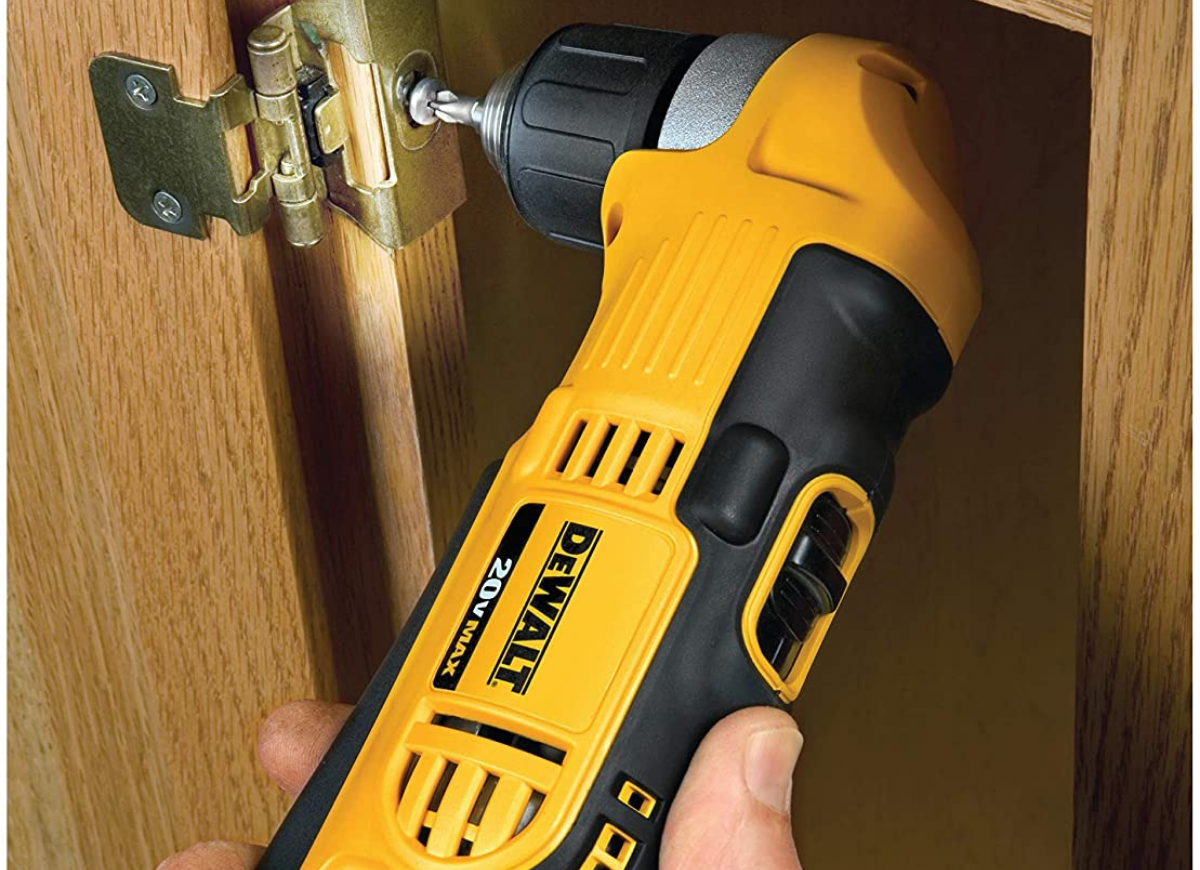
While corded and cordless drills at least look similar, right-angle drills are visually unique. These drills feature long handles that attach to the bottom of the motor to save space, allowing for positioning in tight spots, such as the insides of cabinets, engine bays, stud walls, and other areas where a traditional drill won’t fit.
Our Recommendation: DEWALT 20V MAX Right Angle Cordless Drill on Amazon for $176.89
This DEWALT right-angle cordless drill features a 2,000 rpm run speed, plenty of power, and a sleek head design with a keyless chuck.
Drill Safety Tips
There are a few important safety factors to consider when using a drill:
- Drills can produce a lot of torque, and if their bits bind in a board or surface, the handle might try to “jump” out of your hand. This can cause wrist injury—in the case of heavy-duty right-angle drills, it can even break bones. Because of this, always hold the drill securely during operation.
- When drilling into a wall, it’s important to have an idea of where electrical wires and plumbing pipes are located, hidden behind the drywall. Use a stud finder to help locate wires and pipes before you begin drilling.
- Drill bits, as well as the materials they drill into, can snap and send bits flying. Wear safety glasses to protect your eyes from any airborne debris.
- Before drilling, ensure that there’s nothing behind or underneath the workpiece that the drill bit shouldn’t touch.
- With corded drills, be careful of extension cords getting caught on the feet of ladders or other tools to prevent trips or falls.
Initial Setup and Calibration
Drills come more or less ready to use directly out of the box. After charging and installing the battery of a cordless drill or plugging in a corded drill, the right drill bit for the job at hand should be inserted into the chuck. Learning how to put a drill bit in a drill is fairly straightforward.
- Choose the appropriate drill bit for the fastener size.
- Switch the drill into “reverse” mode so the chuck spins counterclockwise.
- Hold onto the chuck’s grip while the motor is spinning to loosen the chuck and open its jaws.
- Put the drill bit inside the chuck, switch the direction back to clockwise, hold the chuck, and squeeze the trigger until it tightens down on the bit.
How to Use a Drill for Drilling a Hole
The drill’s main purpose is to drill holes in materials like wood and metal. The process isn’t difficult but should be done right, and this step-by-step guide can help.
STEP 1: Install the correct drill bit.
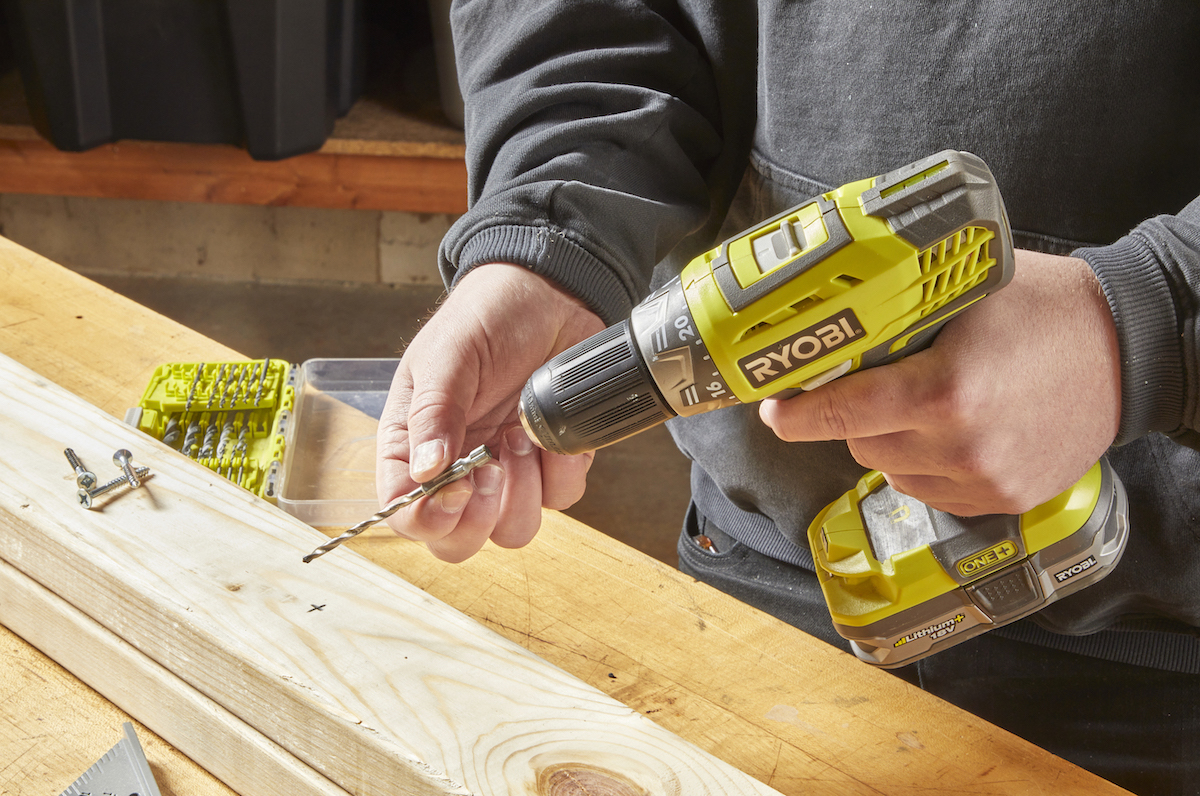
Choose the correct drill bit size. If there aren’t clear instructions for your project, it’s possible to match the bit by eye. When drilling a pilot hole, visually match the diameter of the bit with the shaft (not the threads) of the screw that will go in the hole.
Once chosen, install the bit in the chuck. Set the direction to reverse, lightly squeeze the trigger, and hold onto the chuck until it opens far enough to receive the bit. Place the bit inside the chuck, switch the direction to forward, and hold the chuck while lightly squeezing the trigger.
STEP 2: Place the tip of the drill bit on the mark.
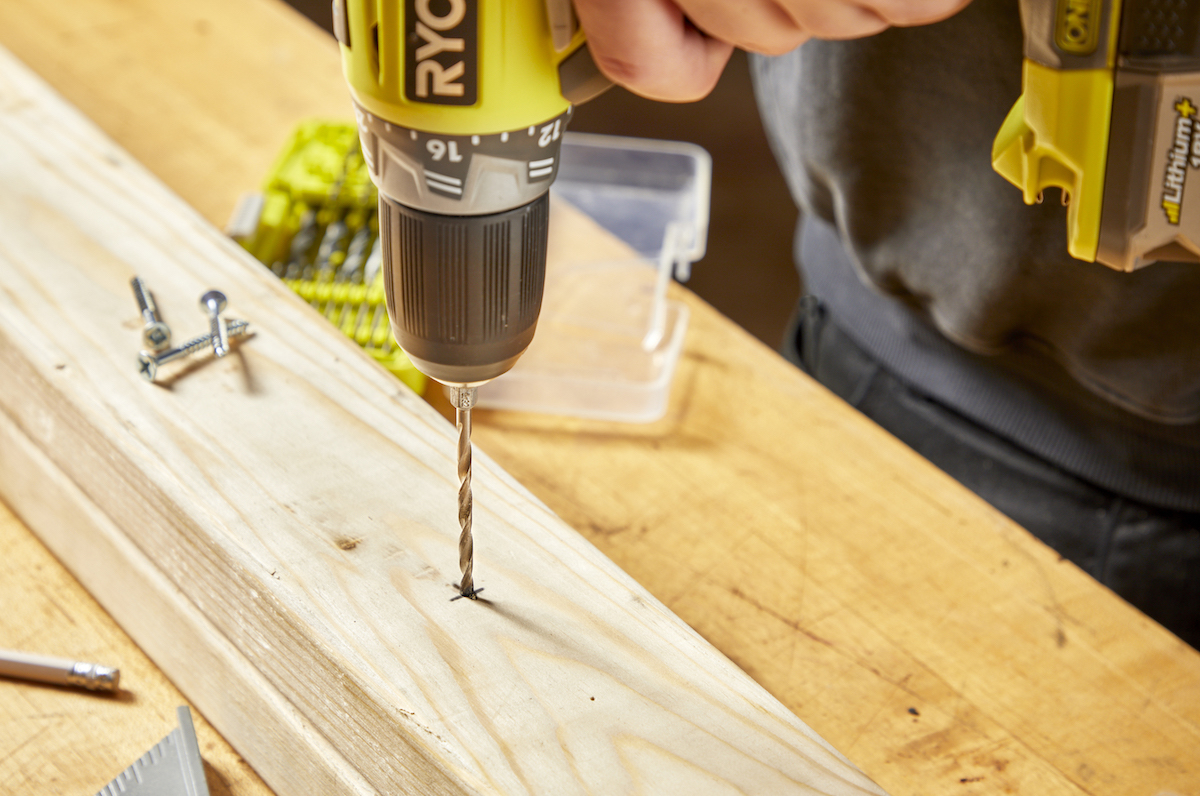
Using light pressure, place the tip of the drill bit on the mark where the hole will be. Hold the drill so the drill bit is as perpendicular as possible to the target surface.
If the drill is aimed at an angle when beginning to drill, the bit will start to “walk” while spinning, meaning it will move away from the mark and result in an inaccurate hole. It can help to place the free hand on the back of the drill to steady it at the correct angle.
STEP 3: Lightly squeeze the trigger.
Switch the drill back to forward mode so the chuck spins clockwise. Applying light pressure to the trigger, start the bit slowly until it begins to dig into the surface. If it begins to walk, stop, release the trigger, replace the tip of the bit on the original mark, and start the process again.
Starting slowly helps drill an accurate hole, while squeezing the trigger too quickly and starting at full speed could cause the bit to walk.
STEP 4: Drill all the way through the surface.
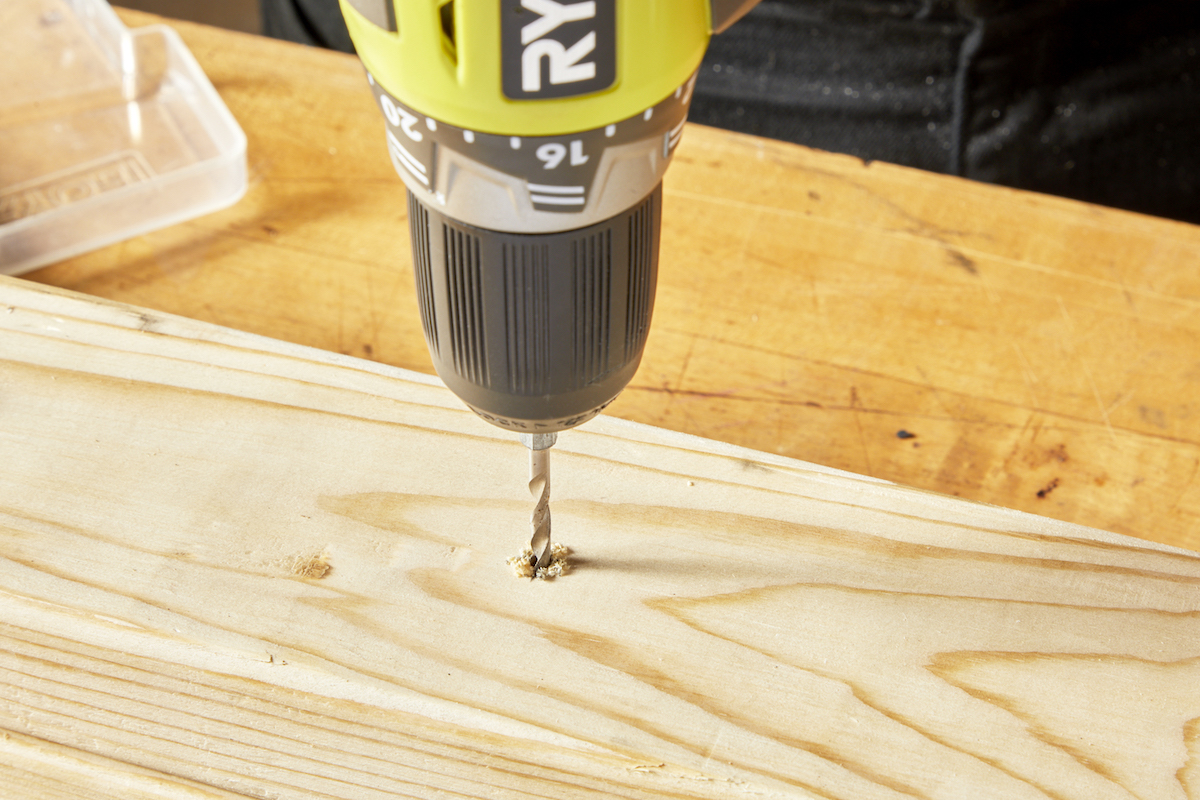
Once the bit is started, gradually increase the speed by squeezing the trigger. While the bit is spinning, apply light forward pressure on the drill to help the bit dig into the surface. Be sure to keep the drill bit perpendicular to drill straight. As the bit is close to drilling all the way through, release the pressure and slow the bit to prevent jamming the chuck into the workpiece.
When drilling through metal, do not increase the speed. Metal requires slow drilling in order to manage heat and prevent the bit from dulling.
How to Use a Drill for Driving Screws
Tightening or loosening screws with a screwdriver takes a long time, and it can be quite a workout, depending on the material and fastener. Knowing how to use a drill for screws speeds up the process tremendously.
STEP 1: Match the driver bit to the fastener head.
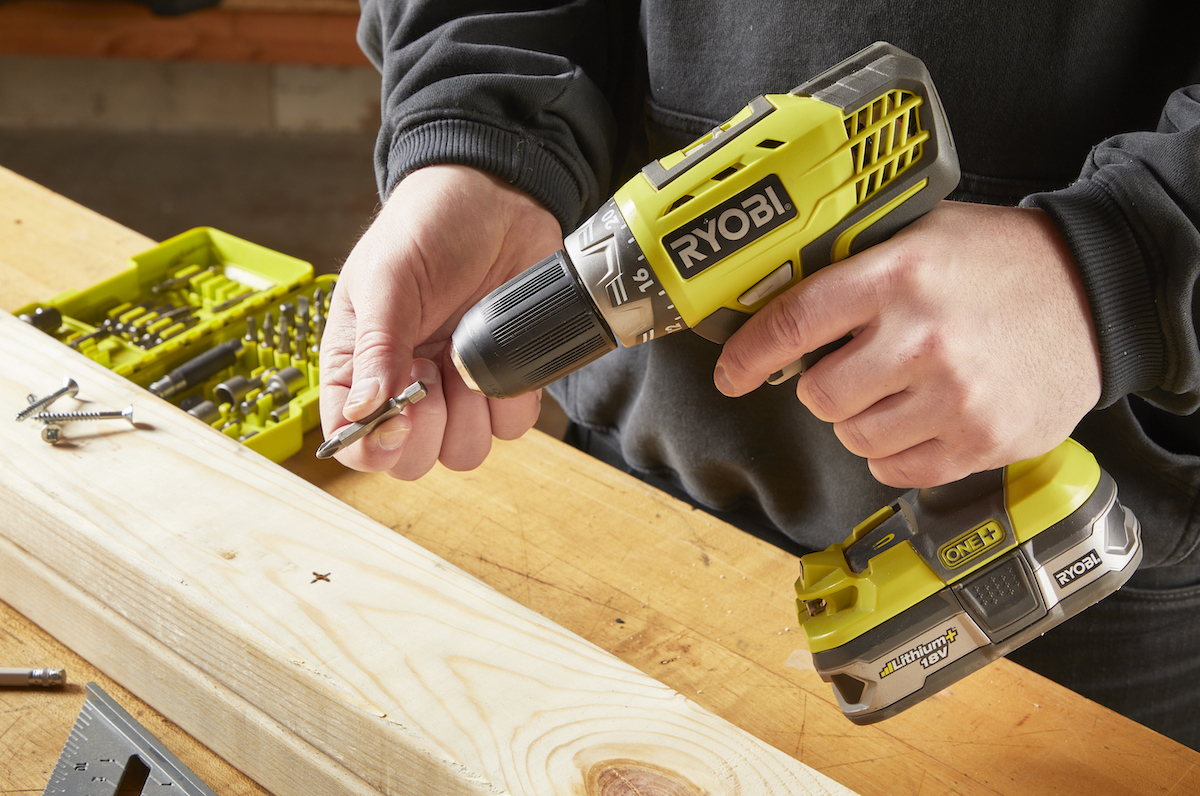
Screws are not universal, so it’s important to match the fastener head with the right driver bit. This could be various sizes of Phillips, straight or regular blade, square, Torx, star, and a number of other bits.
Once chosen, loosen the chuck by switching the direction to reverse. Hold the chuck and apply light pressure to the trigger to open the chuck wide enough to receive the bit. Switch the direction to forward, hold the chuck, apply light pressure to the trigger, and tighten down on the driver bit.
STEP 2: Seat the bit into the fastener.
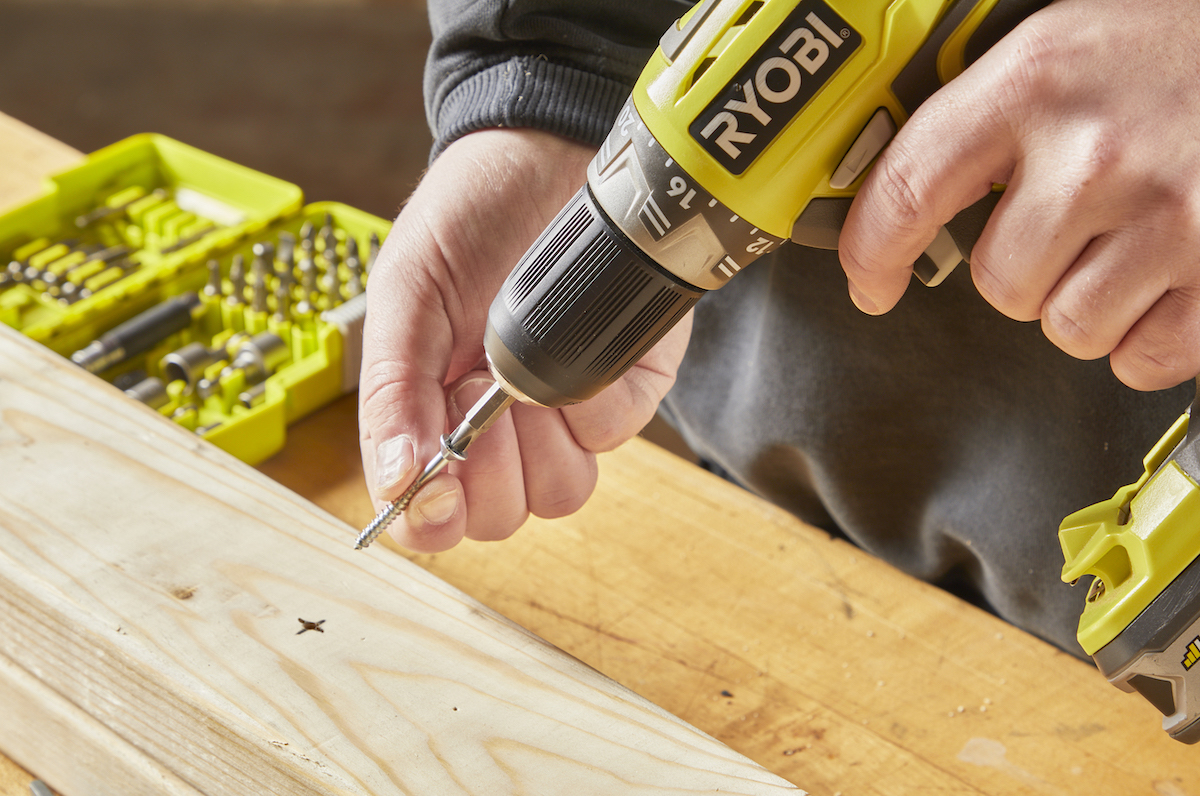
Carefully position the driver bit into the head of the fastener so that it fits snugly. Hold the drill so it is aligned with the fastener. If the drill isn’t in line, or if the bit isn’t fully seated, the bit can damage the head of the screw and make it impossible to drive. Also, holding the drill askew can cause the fastener to slip and the drill can fall off the head.
STEP 3: Squeeze the trigger and apply forward pressure.
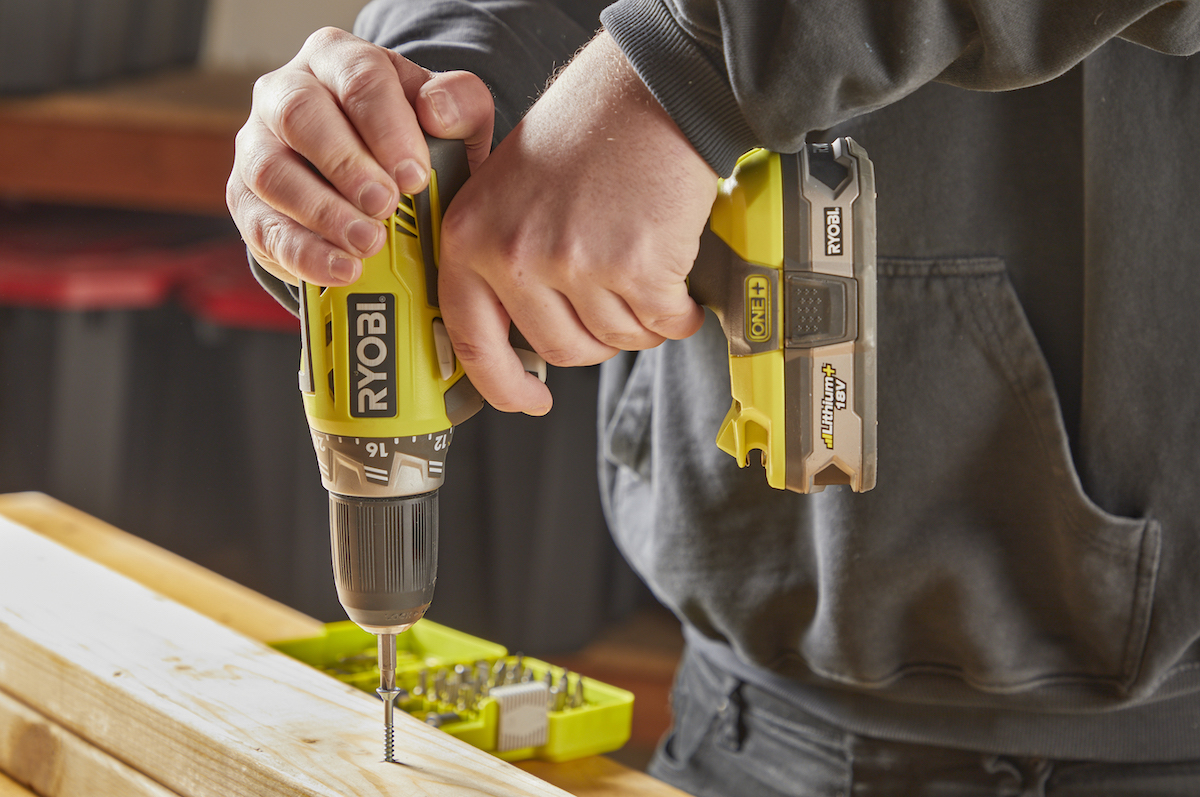
With the bit seated in the fastener and the drill inline with the fastener, apply light pressure to the trigger to start the screw. A bit of forward pressure may also be necessary, as dense materials will resist the screw. Be sure to keep the drill aligned with the fastener.
As the screw begins to dig into the surface, squeeze the trigger to increase the speed, and apply more forward pressure. If the bit begins to skip, reposition the drill so it is straight. Continue until the head of the screw reaches the desired depth.
Drill Maintenance Tips
- Drills make a lot of dust, so be sure to keep them clean by blowing the dust and dirt out with compressed air. Be sure to get the motor housing and chuck specifically.
- For cordless drills, familiarize yourself with battery care. Leaving those batteries on the charger is not the best way to prolong their lives.
- Power drills are tough, but bouncing their chucks off work surfaces every time the bit drills all the way through will shorten its lifespan. Be mindful of how close the bit is to drilling all the way through to prevent bashing the chuck.
- If a drill’s power seems to falter, it might be time to change the motor’s brushes. For drills with accessible brushes, this process is easy, and the manufacturer should be able to supply new brushes.
RELATED: The 10 Best Rotary Hammer Drills, Vetted
Final Thoughts
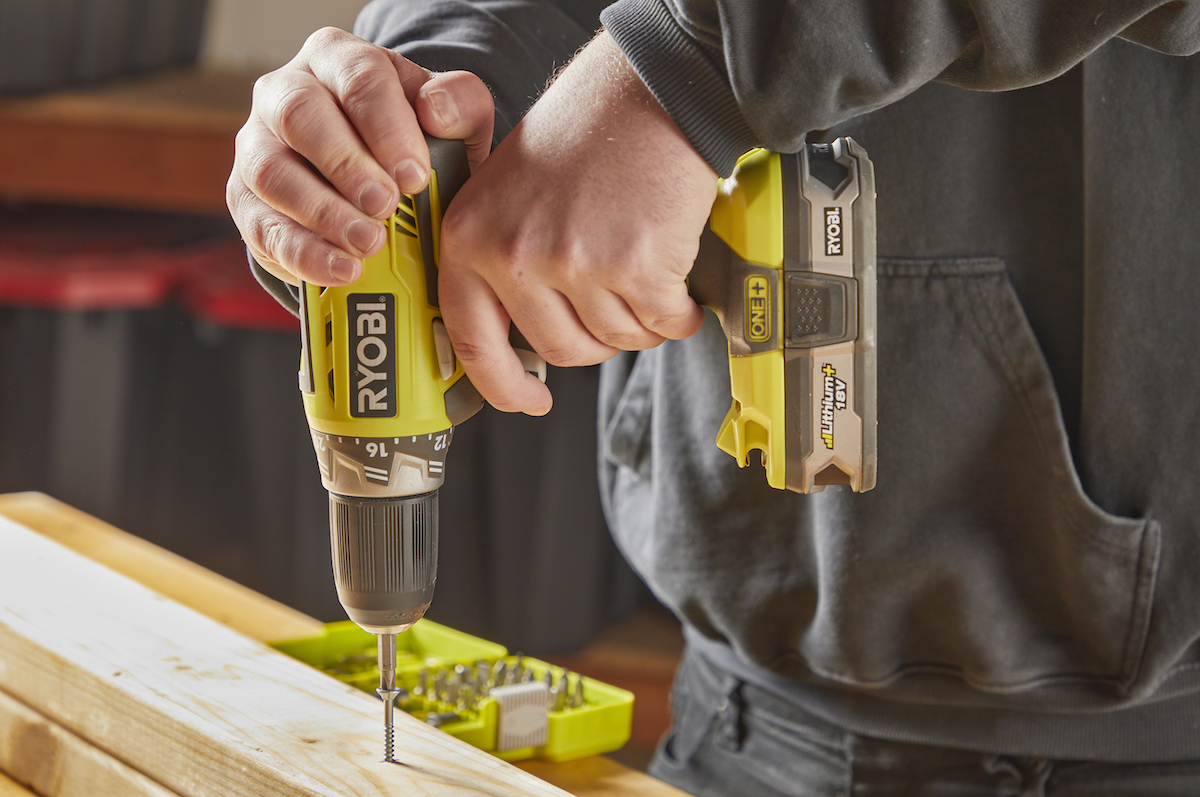
Power drills are great tools, and they can transform otherwise long, arduous, and mistake-prone jobs into short work. From drilling holes to driving screws, all it takes is a bit of confidence and willingness to try a new tool. With the tips above, a new DIYer can get the hang of how to drill safely and accurately. They’ll be drilling, fastening, and creating new projects with their drill in no time.
